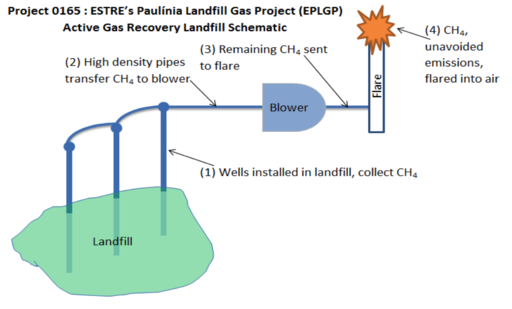News
What are the Environmental & Economic Impacts Associated with Flaring Biogas?

Burning off biogas produced as a byproduct of activities (e.g. on landfills) by flaring it rather than recovering the biogas for use as a source of energy is one way of getting rid of methane and volatile organic carbons (VOCs) produced by these activities, by converting most of them to carbon dioxide. Flaring biogas is a method that is typically used in instances where operators are prohibited from intentionally discharging or venting biogas into the atmosphere. In addition, at landfills and other sites where gases are emitted into the environment, operators are required to monitor surface emissions using a portable, hand-held methane analyzer or similar device.

Emissions Associated with Flaring Biogas
Emissions of various atmospheric pollutants vary according to gas flow input rate. The emission factor (lb/MMBtu) for the various pollutants can be summarized as follows:Atmospheric Pollutants
- Nitrogen Oxides (NOx) - 0.057
- Carbon monoxide (CO) - 0.047
- Particulate Matter (PM) - 0.0123
- Volatile Organic Compounds (VOCs) - 0.0062
- Sulfur Oxide - 0.0403
- Methane - 0.07 (Global Warming Potential = 34 over 100 years)
- Carbon Dioxide - 191.3 (Global Warming Potential = 1 over 100 years)
- Nitrous Oxide -0.0024 (Global Warming Potential = 298 over 100 years)
Cost of Flaring Gas
According to the EPA report, Evaluating the Air Quality, Climate & Economic Impacts of Biogas Management Technologies, it is estimated that installation costs range from $51,700 for projects with lower flow rates (biogas flow rates of 17 SCFM or 0.6 MMBtu/hour) to $972,000 for projects with high flow rates (biogas flow rates of 830 SCFM or 30 MMBtu/hour), while operating costs range from $2,070/year for smaller projects to $38,900 /year for larger projects). Disposing of biogas by flaring therefore costs around $1.25/MMBtu for small scale biogas operations and less than $0.50/MMBtu at larger operations with high flow rates.
Featured Image by Vince Reinhart, CC BY-SA 2.0, via Wikimedia Commons


